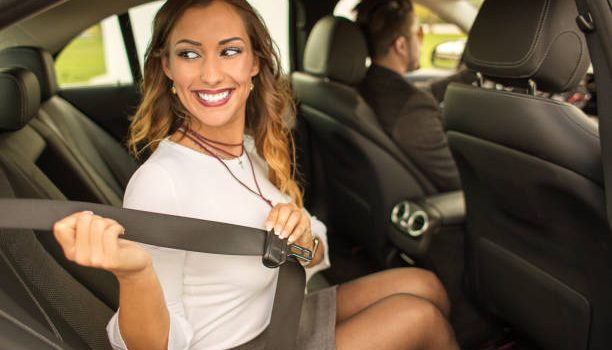A Brief History and Evolution of Chauffeurs
In today’s world, a chauffeur is often seen as a well-dressed professional driving a luxury vehicle like a Mercedes-Benz or Rolls-Royce. But the journey of how this role developed is far more interesting and goes back over a century. From being coal stokers on steam engines to highly trained drivers offering prestige and convenience, the chauffeur profession has changed dramatically over time.
The Origins of the Chauffeur
The word chauffeur comes from the French term chauffer, meaning “to heat” or “stoker”. In the late 1800s, early automobiles ran on steam and needed someone to heat the engine. These early vehicles were tricky to operate and often required two people one to steer and another to keep the engine running. That second person, the “heater-upper”, became known as the chauffeur.
Chauffeurs were not just drivers in the early days. They were mechanics, problem-solvers, and caretakers of very complex machines. The engines needed pre-heating, and breakdowns were common. Early chauffeurs had to know how to handle tyre punctures, engine troubles, and other technical issues that came with early motoring.
From Carriage Men to Car Experts
Before motor vehicles, wealthy families used horse-drawn carriages. Skilled coachmen were responsible for driving, caring for the horses, and maintaining the carriage. These coachmen were the precursors to modern chauffeurs. When motorcars began to replace carriages, many coachmen transitioned into the new role of automobile chauffeurs.
By the early 1900s, owning a car was a luxury only the rich could afford. As a result, chauffeurs became full-time staff members for the elite. A 1906 article from The New York Times even mentioned concerns about finding enough skilled chauffeurs, highlighting how high the demand had become.
Rise of Chauffeurs in the 1920s and 1930s
During the 1920s and 1930s, being chauffeur-driven became a symbol of class and sophistication. Wealthy families and business leaders across the UK and beyond employed personal chauffeurs who were not only drivers but representatives of their status. These professionals often wore tailored suits, gloves, and peaked hats, enhancing the aura of refinement.
Car manufacturers began designing vehicles with a chauffeur in mind. For example, Rolls-Royce created models with separate compartments for drivers and passengers, giving the rich privacy and comfort during travel.
Expansion of Chauffeur Services
By the mid-20th century, private car ownership became more widespread due to advances in manufacturing. As a result, the chauffeur profession began to evolve. Although full-time, in-house chauffeurs were still employed by the ultra-wealthy, chauffeur services became more common for business professionals, special occasions, and formal events.
Public demand for the experience of being driven like a VIP grew. This led to the growth of professional chauffeur companies offering well-dressed drivers and luxury cars for hire. Limousines became especially popular from the 1970s onwards, often used for weddings, proms, and red-carpet events.
What Defines a Modern Chauffeur?
Modern chauffeurs are more than just drivers. Today, they are trained to provide a complete service experience. A good chauffeur is professional, punctual, and polite. Their responsibilities may include route planning, assisting with luggage, and making sure the journey is as smooth and stress-free as possible.
Chauffeurs today drive luxury vehicles such as the Mercedes-Benz S-Class, BMW 7 Series, or even electric vehicles like the Tesla Model S. Companies ensure their drivers are licensed, often CRB-checked, and knowledgeable about the area they serve. In places like Japan, wearing white gloves is still part of the professional attire.
Chauffeuring Becomes More Accessible
Once seen as an exclusive luxury, chauffeured transport is now accessible to a wider audience. Thanks to professional services and apps, you can book a high-end vehicle with a trained driver for business meetings, airport transfers, and city tours. This democratisation of chauffeur services has allowed more people to enjoy the comfort and professionalism that comes with it.
Even though the client base has expanded, the high standards of the profession remain. Many companies focus on delivering excellent customer service, safety, and comfort core values that trace back to the origins of the job.
The Future of Chauffeur Services
As we move into an era focused on sustainability and technology, the chauffeur industry is changing again. Electric vehicles are becoming more common, and some chauffeur companies are now including EVs in their fleets to reduce environmental impact.
In the future, we might see autonomous vehicles playing a role, but the human touch of a professional chauffeur providing personal care, discretion, and service will always be hard to replace.
Conclusion
The role of the chauffeur has travelled a long road from steam engine stokers to trusted professionals offering luxury experiences. What hasn’t changed is the idea of making journeys easier, safer, and more elegant for those who travel. Whether you’re a business executive or a couple on their wedding day, a chauffeur-driven ride offers more than transport it’s a service rooted in tradition, professionalism, and class.
If you’re looking to experience that same blend of comfort and class, 92 Chauffeurs offers premium chauffeur services in London designed to meet the highest standards of excellence.




